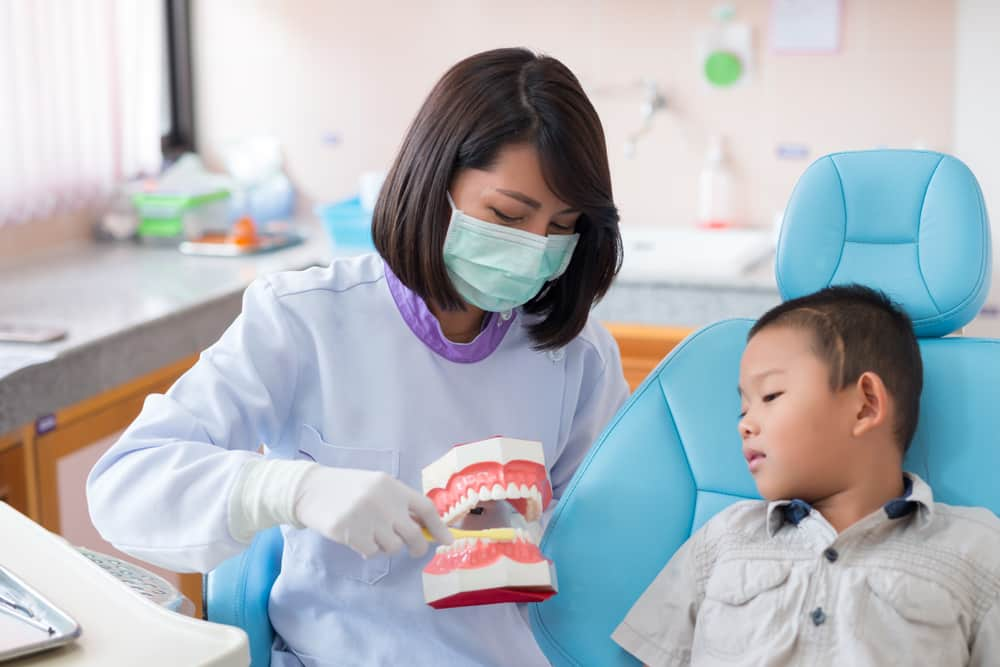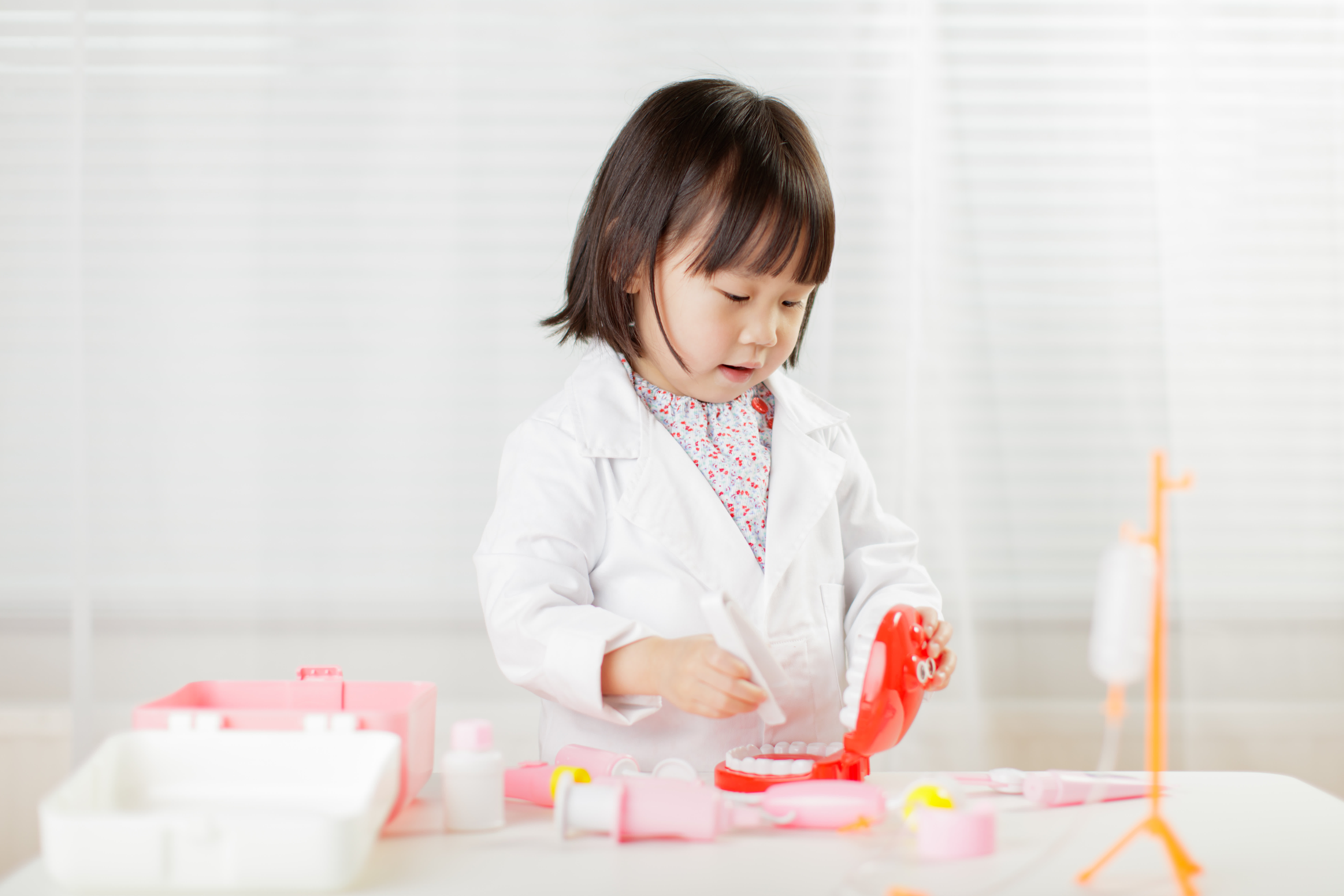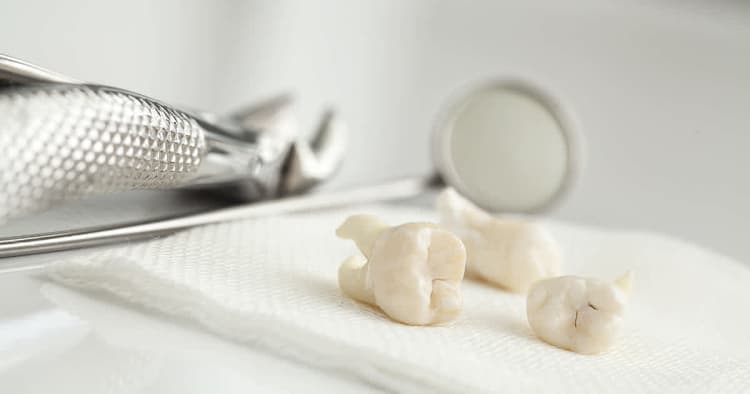Children usually start losing their baby teeth when they are about 6 years old.
Children between 6-12 years old have a mixture of adult and baby teeth. The baby teeth at the back are replaced when they are 10-12 years old. By 10-12 years old, most children have all their adult teeth except for the third molars (wisdom teeth) [1].
A child’s visit to a dentist can be a challenge. This article will tell you why and what you can do to make your child’s visit better.
Facts for you and your child about the dentist:
- Your child should visit the dentist for the first time when they are 12 months old or within 6 months of their first tooth erupting
- Visit the dentist regularly to keep their teeth and gums healthy and to foster good oral hygiene habits. It allows the dentist to keep a close eye on your child's dental development
- Dentists can be scary and overwhelming for children, especially because they are exposed to unfamiliar faces, instruments, new sounds, and tastes.

Here are 8 ways to prepare your child for the dentist:
1. Appointment timings
- Do not schedule appointments around your child’s nap time. They tend to be restless and grumpy.
- Morning appointments work well as they are fresh and alert.
2. Use your words wisely
- Remember that children are always listening to what you say even when you think they are not.
- Do not threaten children with the dentist. “He will pull out all your teeth if you’re naughty/don’t eat your food.” Avoid using words like pain, needle and injection when describing the dentist.
- Let the dentist use their own words/vocabulary when talking to children
- Use positive, assuring words, such as ‘keeping your teeth strong and healthy’ or ‘to make your teeth clean and bright’.
- Avoid bribing them with sweet treats or toys. Do not say “If you don’t cry, I’ll give you a cupcake.” The child might think that something so bad is going to happen that they will cry at the dental visit. Offer praise, encouragement, small gifts, and even stickers after the appointment.
3. Watch cartoons or read books about going to the dentist
- Start a conversation about the importance of taking care of their teeth
- Bring the dentist up in casual conversation
- Tell them that you visit the dentist too
- Here are some books for your children:
- Songs
- Peppa pig goes to the dentist
- Live example of a child visiting a dentist:
- A child’s visit to the Dentist
- Videos, games, and printables from Sesame Street
- https://sesamestreetincommunities.org/topics/health/
4. Roleplay at home

- Encourage your child to play the patient, the dentist, the nurse even the parent.
- Have your child use a toothbrush to clean their dolls’ (favourite toy) teeth.
- Get your child to look in the mirror and open wide! Then count their teeth with them.
- Use a torch to look into your child’s mouth so your child is exposed to the bright lights in the dental chair.
- Describe a dentist’s chair to them, describing how it can move up or down and how the backrest can move so your child lies in different positions.
- Roleplay using gloves and masks so that your child is comfortable when the dentist uses them during a check-up and treatment.
5. Social stories
Use ‘social stories’ so your child knows how it is like to visit a dentist. Social stories are short, simple stories with pictures that describe a typical social situation. While most commonly used for children with Autism, social stories can also be useful for your child whether or not they have Autism:
- A visit to the dentist with Dr Morris
6. Bring their favourite item along
- It could be a toy, pillow, blanket or even their favourite book.
- The item should be something that is familiar and comforting to hold while they are on the chair.
7. Be a good role model
- Have your child watch you brushing your teeth. Brush teeth together. Make sure your child brushes their teeth twice a day with fluoride toothpaste. [2]
- Most fears are passed down from parents to children.
- Children are very perceptive and can easily pick up on parents’ fears and anxieties. If you are anxious about the dentist, avoid bringing them together with you for an appointment.
- Be calm and positive. Give your child good moral support.
8. Be reassuring
- Let them know that you will be there throughout the procedure and you will hold their hands.
- Trust the dentist and the team, they know how to handle a child. Prepare for some fussing. It is normal and age-appropriate when a stranger checks their teeth. Be close by to comfort and encourage them.
Good preparation may help the dental visit be a pleasant one for your child. Eventually, they might even love going to the dentist.













